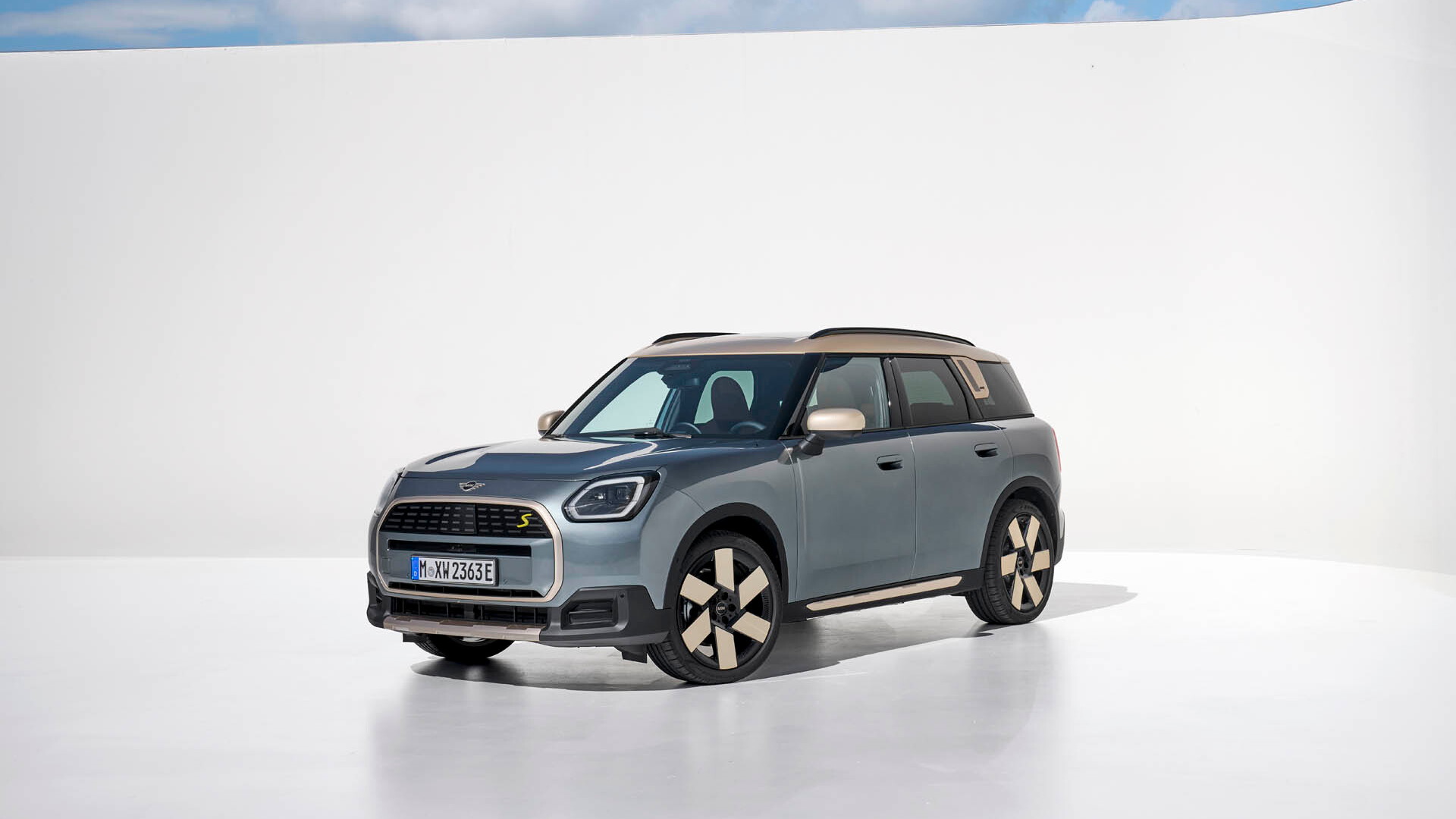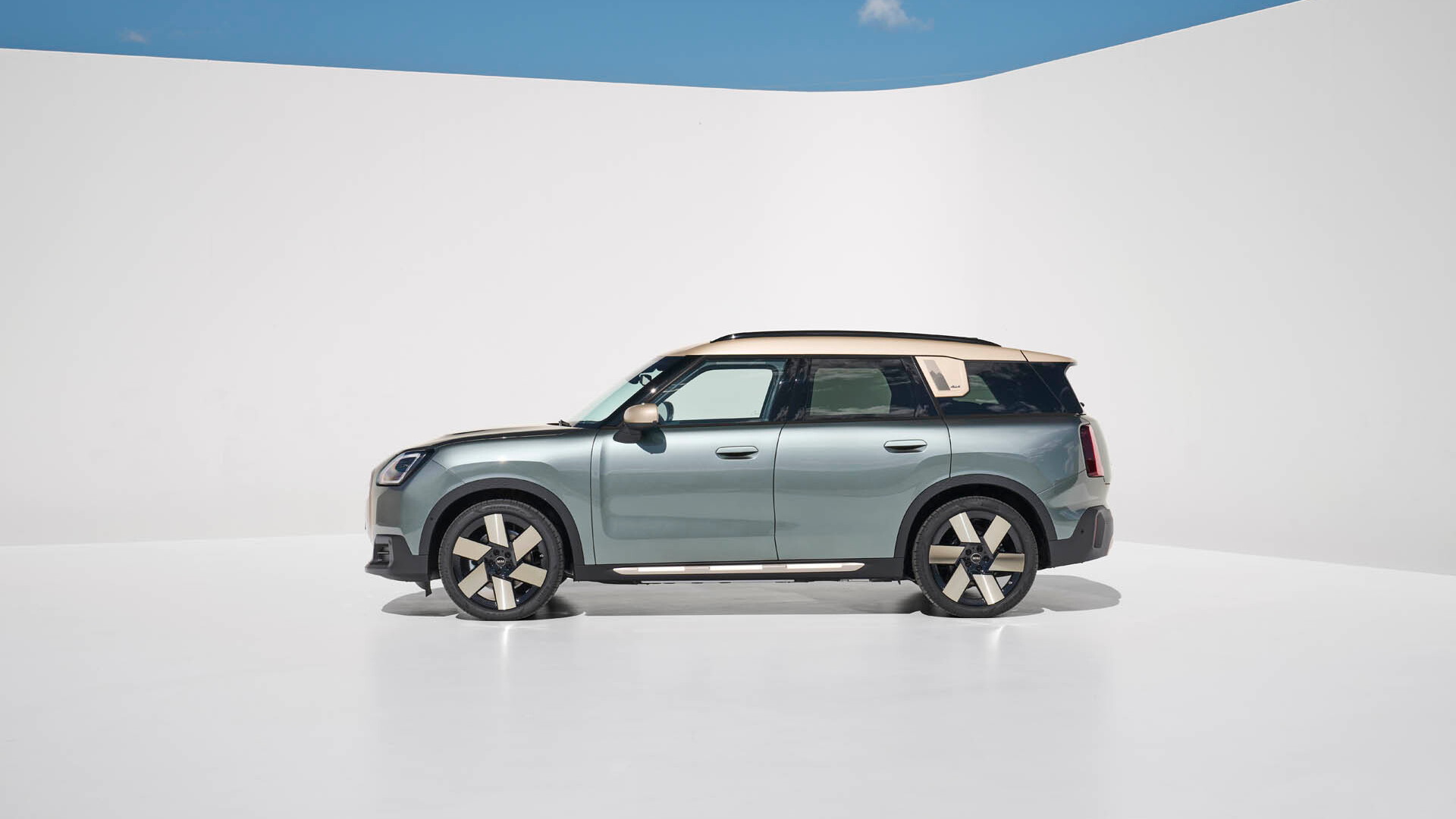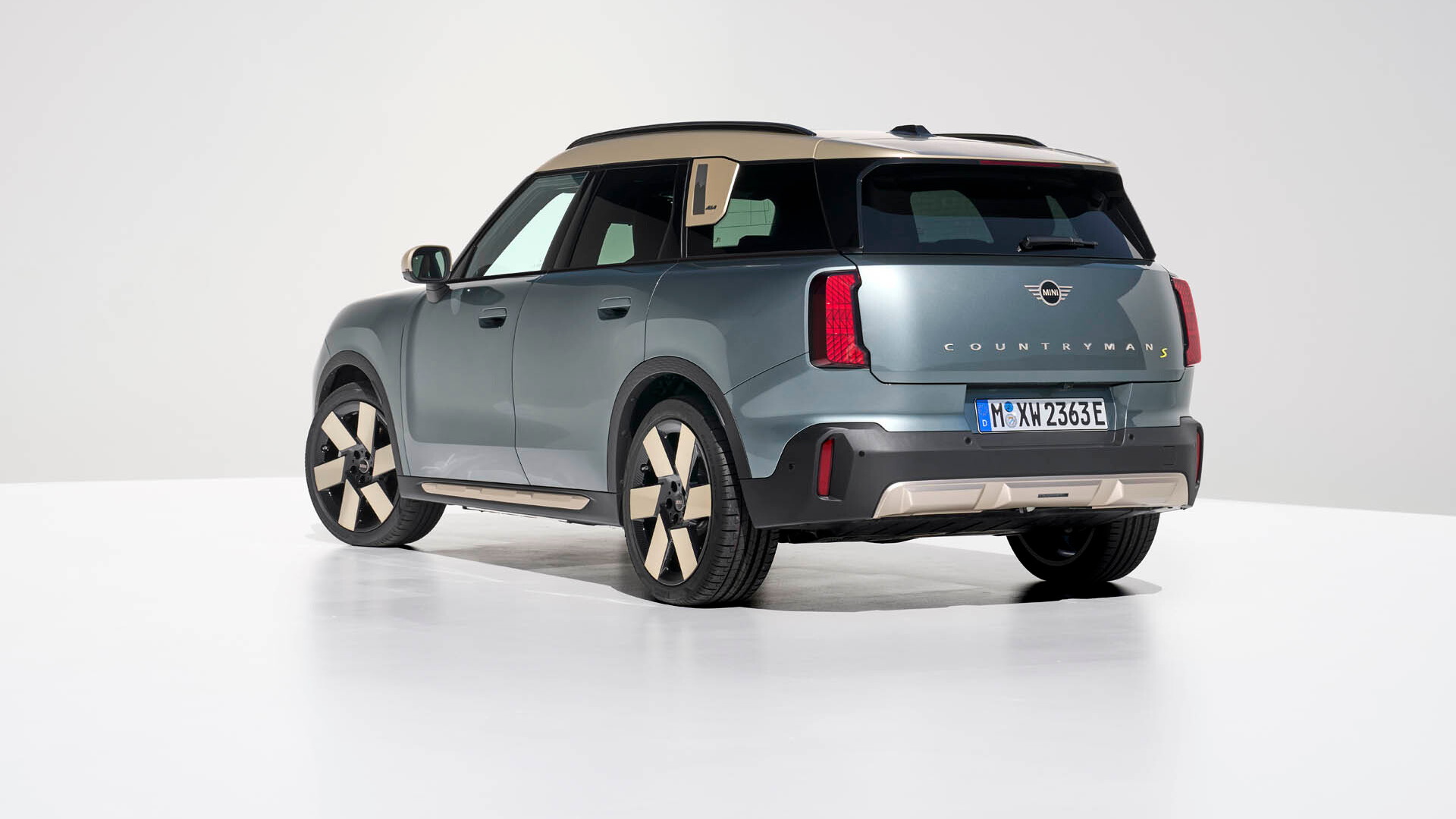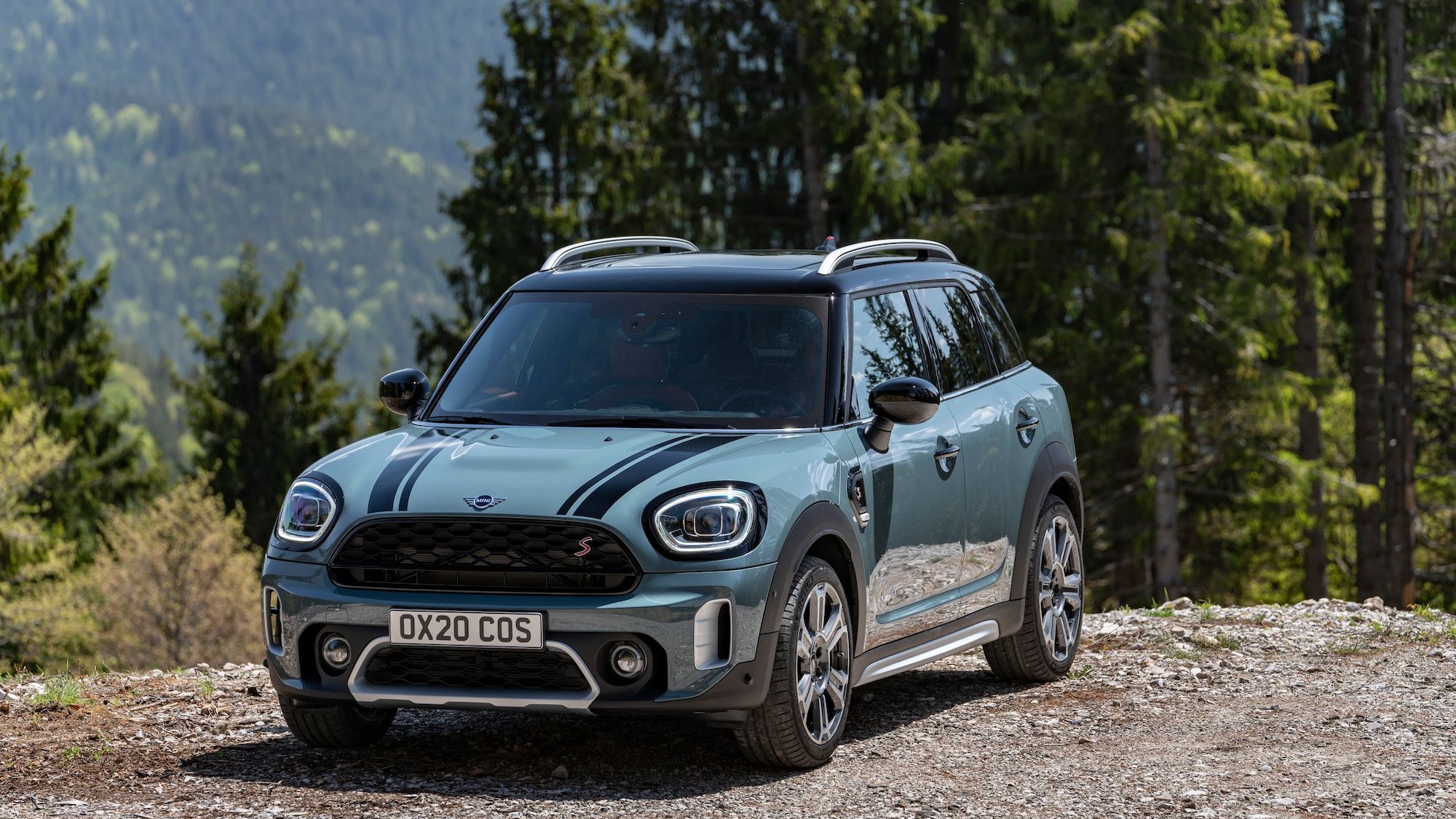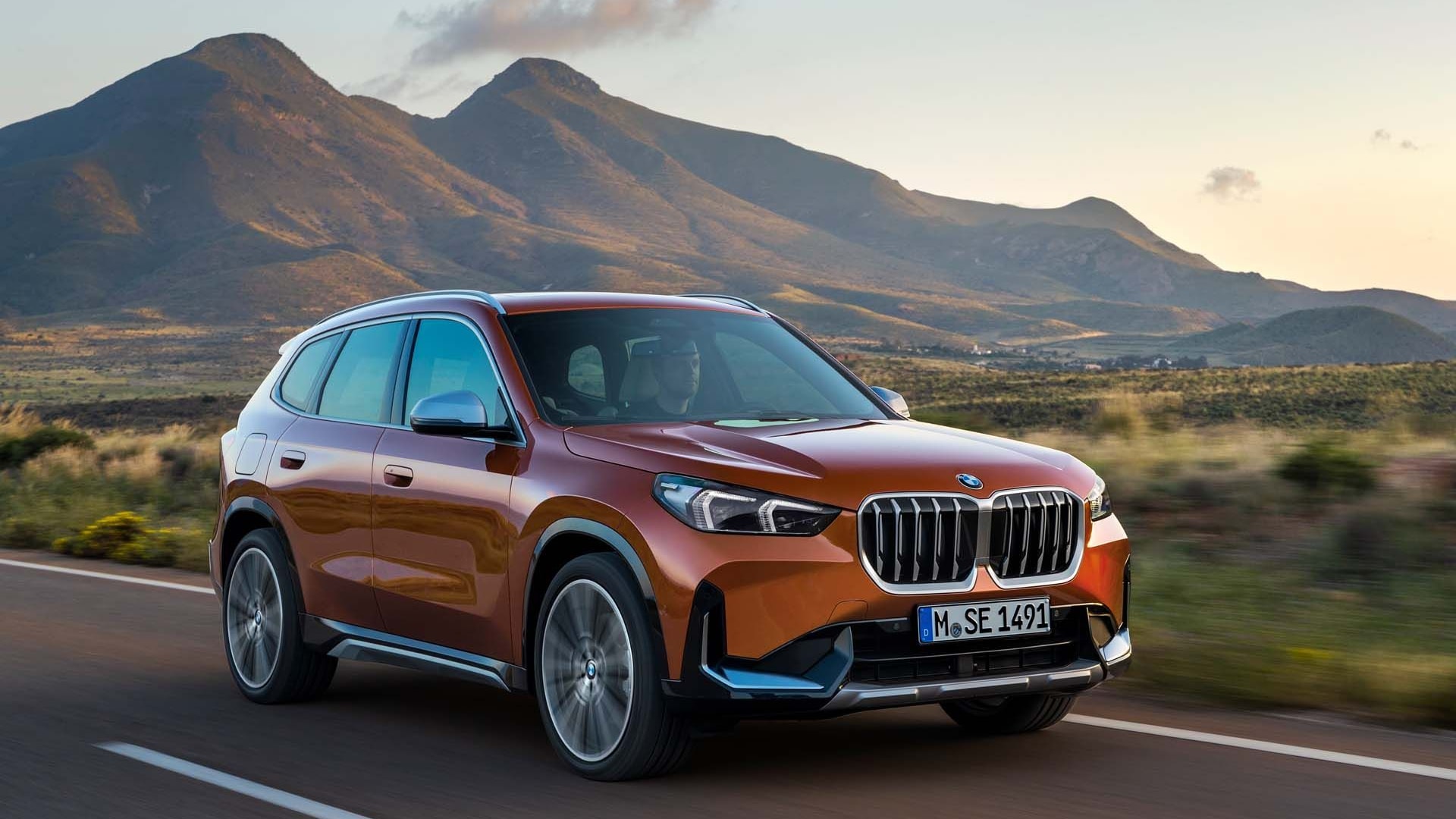Mini on Friday revealed a redesigned third-generation Countryman crossover that's due to start sales next year as a 2025 model.
It was revealed alongside a new generation of the signature Mini Cooper hatchback which also arrives as a 2025 model.
Both vehicles make their formal debut next week at the 2023 Munich auto show in Germany.
The new Countryman follows an evolutionary path but has been made bigger in an effort to target young families. The bigger size should also boost the vehicle's appeal in the U.S., as well as make space in Mini's lineup for the smaller, fully electric Aceman crossover that's still in the works.
Total length has grown to 174 inches, up 5.1 inches on the outgoing model, and the height has also grown about 2.4 inches to 63.5 inches. Storage space is 16 cubic feet with the rear seats in place and 51 cubic feet with the seats folded flat.
Battery-electric power is also included in the Countryman for the first time. Mini has confirmed two electric grades: a base Countryman E with 188 hp and a sportier Countryman SE with 308 hp. The SE will sprint to 62 mph in 5.6 seconds and comes with all-wheel drive, made possible by a dual-motor setup. The battery has previously been confirmed as a 64.7-kwh unit, which Mini has said will deliver a range of about 280 miles in the Countryman E on the WLTP test cycle used overseas. The stricter EPA cycle should result in a lower estimate.
Internal-combustion engines will still be offered, though Mini hasn't said whether a plug-in hybrid option will be included, like on the outgoing model. For the ICE range, Mini has confirmed a base Countryman C with front-wheel drive, a mid-range Countryman SE with all-wheel drive, and a range-topping Countryman JCW also with all-wheel drive. The engines are thought to carry over from the outgoing Countryman, meaning a 1.5-liter turbo-3 in the base model and 2.0-liter turbo-4 units in the spicier SE and JCW.
The towing capacity for the new Countryman is 2,645 pounds.

2025 Mini Countryman
Inside, the dash design skips a traditional instrument cluster, with key driving information instead moved to the circular infotainment screen in the center. A head-up display will be available for drivers that still want the key information straight ahead. Buyers will also be able to add textile surfaces on the dash for the first time, as well as sport seats and a panoramic glass roof.
Some physical controls remain on the steering wheel and on a bar located below the infotainment screen. This bar contains the gear selector and a toggle switch for the drive modes, which Mini refers to as Experiences. A sport mode is included, called Go-Kart. A voice assistant is also included.
Some electronic driver-assist features are also included, either standard or available. One of these is a new hands-free mode for traveling in a single lane on highway-like roads. The system still requires the driver to monitor at all times and only functions at speeds of up to 37 mph.
To boost sustainability of the vehicle, Mini has shed decorative elements like chrome while relying on recycled materials for many of the parts. For example, the surfaces of the dashboard, steering wheel, vehicle headliner and floor, and floor mats are made from polyester sourced from PET bottles and old carpets. The alloy wheels, which range up to 20 inches in diameter, also use 70% recycled aluminum, Mini said.
Production of the new Countryman will be handled at a plant of parent company BMW Group located in Leipzig, which will make it the first Mini to be built in Germany (the outgoing model is built in the Netherlands). The plant is where BMW builds the latest 1-Series, 2-Series Active Tourer, and 2-Series Gran Coupe—all vehicles that use the FAAR platform that underpins the new Countryman, including the electric versions. The FAAR platform is an evolution of the UKL platform underpinning the outgoing model.
